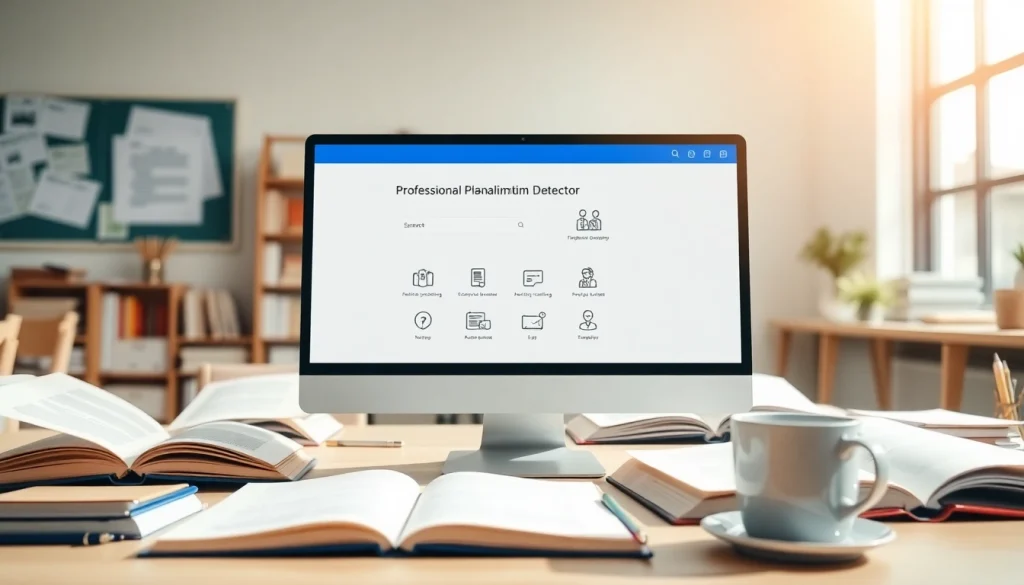Understanding Plagiarism and the Importance of Detection
In an increasingly interconnected world, where ideas and content circulate freely, plagiarism has emerged as a significant concern in academic, professional, and creative fields. The need for robust mechanisms to detect plagiarism cannot be overstated. This article will delve deeply into what plagiarism is, why it’s crucial to utilize a plagiarism detector, and the consequences of ignoring this issue.
What is Plagiarism?
Plagiarism is the act of using someone else’s work, ideas, or expressions without appropriate acknowledgment, presenting them as one’s original creation. This issue can manifest in several forms:
- Direct Plagiarism: Copying text word-for-word without citation.
- Self-Plagiarism: Reusing one’s own previously published work without proper acknowledgment.
- Patchwork Plagiarism: Piecing together phrases or ideas from various sources to create a new work without citation.
- Accidental Plagiarism: Failing to cite sources properly due to ignorance or misunderstanding of citation rules.
Each form of plagiarism undermines the integrity of the original work and can lead to serious repercussions for the accused. Educational institutions and employers increasingly hold stakeholders accountable for maintaining intellectual honesty.
Why Use a Plagiarism Detector?
Utilizing a plagiarism detector serves multiple purposes:
- Safeguarding Integrity: By detecting potential plagiarism before submission, individuals can maintain their credibility and protect their intellectual property.
- Enhancing Learning: Students and writers can use these tools to understand citation practices and improve their writing skills by learning to paraphrase effectively.
- Identifying Sources: Many detectors provide insights into where the detected content was originally published, allowing for proper citation and acknowledgment.
In a competitive academic environment, the consequences of neglecting to check for plagiarism can severely impact a student’s grade and future opportunities.
Consequences of Ignoring Plagiarism
The implications of ignoring plagiarism are grave, impacting individuals and institutions alike:
- Academic Repercussions: Students may face penalties ranging from failing grades to expulsion for academic dishonesty.
- Legal Consequences: Professionals and authors may face lawsuits for copyright infringement, which can lead to financial loss and damage to reputation.
- Professional Harm: Plagiarism can tarnish an individual’s credibility, impacting job prospects and career advancement.
Thus, the use of plagiarism detectors is not merely a best practice but a necessity for preserving academic and professional integrity.
How a Plagiarism Detector Works
Understanding the mechanics behind plagiarism detection tools can help users select the right tool and interpret the results more effectively. These tools employ various technologies to identify plagiarized content accurately.
Mechanisms Behind Detection Technology
Plagiarism detectors utilize advanced algorithms and database systems to identify similarities between submitted text and existing content. The primary mechanisms include:
- Text Matching: This fundamental technique compares the submitted text against a vast database of published materials. When matches are found, the tool highlights the similarities.
- Fingerprinting: In this method, the tool creates a unique fingerprint of the text based on its structure and word choice, comparing this fingerprint against existing documents.
- Natural Language Processing (NLP): Some advanced detectors employ NLP to understand the context of the text, which may help identify paraphrased or reworded content that directly aligns with existing works.
Types of Plagiarism Detectors
Plagiarism detectors can vary widely in function and capabilities:
- Free Plagiarism Checkers: These tools often have limited features and may not thoroughly check all sources. They serve well for casual or preliminary checks.
- Professional/Subscription-based Tools: Tools like Turnitin and Grammarly offer comprehensive databases and advanced detection capabilities for educational institutions and professionals.
- Specialized Detectors: Some detectors cater to specific types of content, including code, essays, or academic papers.
Evaluating Accuracy and Reliability
The effectiveness of a plagiarism detector must be evaluated through several criteria:
- Database Size: A larger database increases the likelihood of detecting matches.
- Reporting Features: Effective tools provide detailed reports that not only highlight plagiarism but also offer suggestions for improvement.
- User Feedback: User reviews and academic references can provide insight into a tool’s reliability.
Using a reputable plagiarism detector ensures users receive accurate and actionable feedback on their writing.
Choosing the Right Plagiarism Detector for Your Needs
The multitude of plagiarism detection tools available today can be overwhelming. Selecting the appropriate tool depends on various considerations.
Features to Look For
Key features to consider when evaluating a plagiarism detector include:
- Real-Time Reporting: The ability to provide instant feedback can be vital for time-sensitive submissions.
- Document Compatibility: The tool should accommodate various formats, including Word documents, PDFs, and web pages.
- Depth of Analysis: Look for tools that not only detect text matches but also analyze context and structure.
Comparing Popular Plagiarism Detection Tools
Some of the most widely used plagiarism detection tools include:
- Turnitin: Primarily used in educational institutions, Turnitin offers a robust database and comprehensive reporting features.
- Grammarly: While primarily a grammar checking tool, Grammarly’s plagiarism checker provides users with instant reports of potential plagiarism.
- PapersOwl: This online service provides a free plagiarism checking tool for students, employing advanced AI technology for report generation.
- DupliChecker: A free and user-friendly tool that allows users to check text against significant online databases.
Each tool presents distinct strengths, making it crucial to assess individual needs and academic or professional requirements when making a choice.
Free vs. Paid Options: Which is Better?
When deciding between free and paid options, consider the following:
- Functionality: Paid options often provide more comprehensive features, including in-depth reporting and extensive databases for accurate results.
- Frequency of Use: If you frequently need plagiarism detection services, investing in a paid tool may be worthwhile.
- Accuracy: Paid services typically offer higher accuracy levels due to better databases and advanced algorithms.
Determining the right tool involves balancing cost, functionality, and the specific needs of your writing environment.
Effective Usage of a Plagiarism Detector
To maximize the effectiveness of any plagiarism detector, users must understand how to integrate these tools into their writing and editing processes strategically.
Best Practices for Students and Educators
Implementing best practices ensures that plagiarism detectors are used effectively:
- Routine Checks: Students should routinely check their writing for plagiarism before final submission to foster consistent practices.
- Teach Citation Styles: Educators should elucidate various citation styles such as APA, MLA, and Chicago to help students recognize proper acknowledgment of sources.
- Encourage Original Thought: Beyond plagiarism checks, educators should promote creativity and originality in writing efforts.
Integrating Detection Tools into Writing Processes
For effective integration of plagiarism detectors into the writing process, consider the following steps:
- Draft Review: Utilize a plagiarism detector after completing an initial draft to catch any inadvertent plagiarism that may have occurred during research.
- Before Submitting: Always run a final check just before submitting work to ensure that no text matches are present.
- Feedback Loop: Use the results from the detector to revise and improve writing, focusing on areas flagged for concern.
Case Studies of Successful Implementation
Numerous educational institutions have adopted plagiarism detection software with great success:
- University Implementation: A university integrated Turnitin into its curriculum for homework submissions and has seen a 30% decrease in cases of reported academic dishonesty.
- High School Deployment: A secondary school implemented a plagiarism check with Grammarly and reported improvements in students’ understanding of citation rules and original writing.
- Corporate Training: A corporation introduced a plagiarism detection tool in its training program for technical writers, which improved content authenticity and reduced rework.
Future Trends in Plagiarism Detection Technology
The landscape of plagiarism detection is evolving, influenced by advancements in technology and educational needs. Here are some of the emerging trends shaping the future of plagiarism detection.
Emerging Technologies in Detection
As technology advances, so do the capabilities of plagiarism detectors:
- AI and Machine Learning: The use of AI is becoming more prevalent, enabling systems to better understand context and nuances in writing.
- Blockchain for Provenance Tracking: Innovations are exploring blockchain technology for verifying the originality of work, which could revolutionize how authorship is tracked.
- Collaborative Solutions: Detection tools are increasingly offering collaborative features for teams working on shared projects to promote original contributions.
Impact of AI on Plagiarism Detection
Artificial intelligence is set to revolutionize plagiarism detection further:
- Contextual Analysis: AI-powered tools can identify paraphrasing and similar ideas across diverse formats, improving the recognition of non-literal plagiarism.
- Learning-based Improvement: Tools that utilize machine learning can continually adapt and refine their detection algorithms based on user input and evolving writing styles.
Ensuring Ethical Use of Technology
As the technology evolves, ethical considerations remain paramount:
- Maintaining Academic Integrity: Educators need to focus on teaching the ethical use of sources rather than just relying on detection tools.
- Transparency in Usage: Educational institutions must create clear policies regarding the use of plagiarism detectors to avoid misunderstandings among students.
By fostering an environment that values originality while utilizing detection technology responsibly, institutions can uphold high standards of academic integrity.


